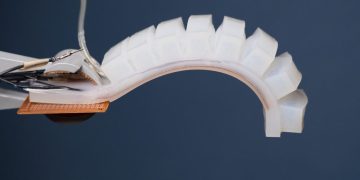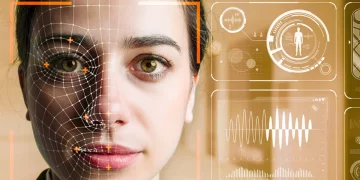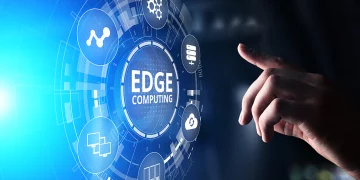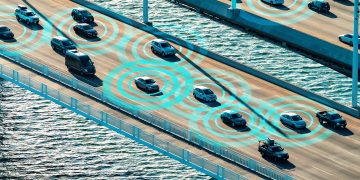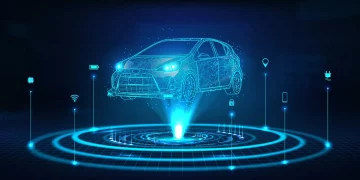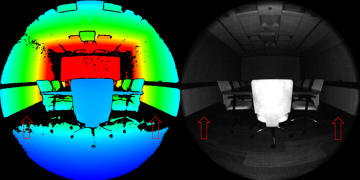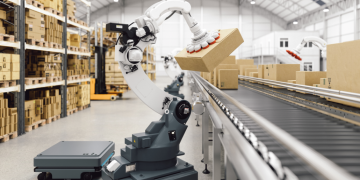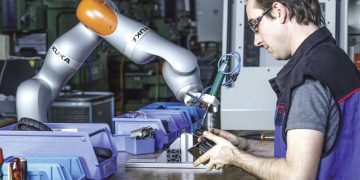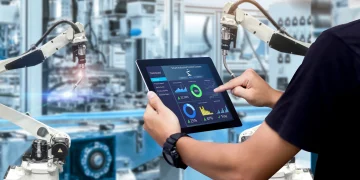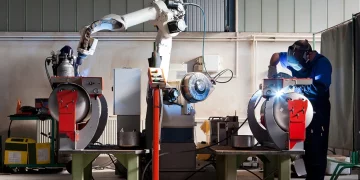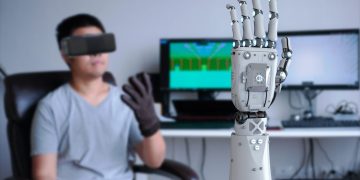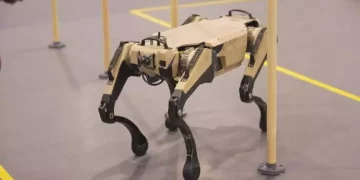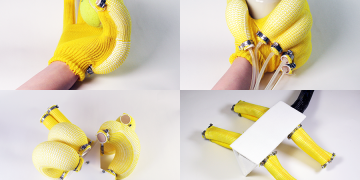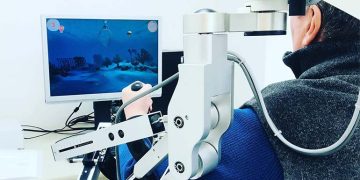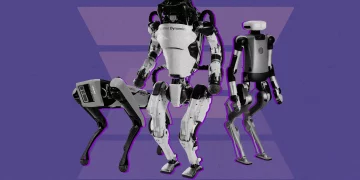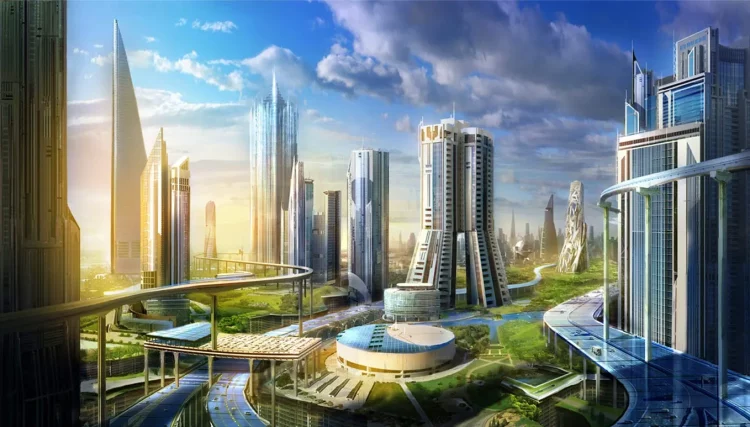As urbanization continues to accelerate globally, cities are becoming more complex, dynamic, and interconnected. The rapid advancements in technology, particularly in the fields of robotics, artificial intelligence (AI), and the Internet of Things (IoT), are shaping the cities of the future. In this future, robots are poised to play a central role in enhancing urban life by providing seamless, efficient, and innovative services in every corner of the city. From public transportation to healthcare, from waste management to environmental monitoring, robots will be integral in ensuring that cities are not only more efficient but also sustainable, safe, and livable for all citizens.
This article explores how robots will transform the urban landscape, the key technologies driving these changes, and the societal, economic, and ethical considerations surrounding their deployment.
1. Introduction: The Evolution of Urban Robotics
Cities are hubs of human activity, bustling with millions of people, vehicles, and infrastructure. However, these cities often face numerous challenges: traffic congestion, environmental pollution, inefficient waste management, healthcare accessibility, and maintaining safety and security.
The integration of robotics into urban settings promises to address these issues and drastically improve the quality of life for city dwellers. With the increasing complexity of urban environments, robots will not only assist humans in performing mundane tasks but will also be designed to operate autonomously, efficiently, and collaboratively with people.
The smart city concept envisions a future where technology and data-driven solutions are leveraged to optimize city operations. As part of this evolution, robots will be at the forefront of smart city services, seamlessly integrated into the everyday lives of people. Whether working alongside human teams or operating independently, robots will become integral to the urban ecosystem.
2. Robotics and Urban Mobility: Revolutionizing Transportation Systems
Autonomous Vehicles: A New Era of Urban Mobility
One of the most anticipated applications of robotics in urban environments is autonomous transportation. Self-driving cars, buses, and trucks will soon become a common sight on city streets. These autonomous vehicles will provide a safer, more efficient, and environmentally friendly alternative to traditional vehicles, particularly in densely populated urban areas.
- Traffic Management: Autonomous vehicles equipped with AI-powered algorithms will help streamline traffic flow, reduce congestion, and improve road safety by avoiding human errors. The integration of connected vehicles with smart infrastructure will allow for real-time traffic management, reducing bottlenecks and ensuring smooth commutes.
- Shared Mobility: Robotics will also play a key role in the rise of shared mobility services such as ride-hailing, car-sharing, and bike-sharing. Robots will be used for efficient fleet management, route optimization, and ensuring seamless user experiences.
- Urban Air Mobility (UAM): As part of the transportation revolution, flying robots such as drone taxis and cargo drones will take to the skies. These aerial vehicles will ease congestion on the ground, offering new, efficient transportation options for both people and goods.
Last-Mile Delivery: Robots at Your Doorstep
Another exciting area where robots will play a role is last-mile delivery. Autonomous delivery robots and drones will deliver goods directly to consumers’ doorsteps, bypassing the complexities of human-delivered services. These robots can navigate through cities, delivering parcels, groceries, and even meals without human intervention.
This technology will significantly reduce traffic congestion, cut down on emissions, and enhance convenience for consumers. Autonomous ground robots (AGRs) and drone delivery systems will be crucial in handling the high demand for rapid deliveries in crowded urban areas, contributing to the development of a more sustainable and efficient logistics system.
3. Robots in Public Services: Healthcare, Safety, and Maintenance
Robots in Healthcare: Enhancing Accessibility and Efficiency
As cities continue to grow, so does the need for accessible and efficient healthcare. Robots will play a pivotal role in transforming urban healthcare services, particularly in providing timely and accurate care. Robots will not only assist doctors and nurses in performing tasks, but they will also provide direct care to patients.
- Telemedicine and Remote Care: Telepresence robots will enable doctors to interact with patients remotely, providing consultations, diagnoses, and follow-ups. This is particularly beneficial for elderly citizens, individuals with disabilities, and people living in underserved urban areas.
- Surgical Robots: In hospitals, surgical robots will assist in performing complex procedures with greater precision. By minimizing human error, these robots will enhance the quality of medical treatments and reduce recovery times for patients.
- Personalized Healthcare: Robotic assistants equipped with AI will monitor patients’ health status in real-time, helping prevent medical emergencies and enhancing overall well-being. These robots can also administer medications and alert healthcare providers if any complications arise.
Robots in Public Safety: Ensuring Security in Smart Cities
Robots will significantly enhance public safety by providing real-time surveillance, emergency response, and crime prevention services. Autonomous drones, ground patrol robots, and AI-driven surveillance systems will work together to monitor urban areas and ensure public security.
- Surveillance Drones: Equipped with high-definition cameras and sensors, these drones will patrol public spaces, such as parks, streets, and transportation hubs, providing law enforcement with real-time information on potential threats.
- Emergency Response Robots: In case of fires, explosions, or other disasters, robots will be deployed to assist emergency responders by locating victims, assessing hazardous environments, and providing logistical support. These robots will reduce risks to human lives and improve the efficiency of rescue operations.
- Crime Prevention: AI-powered robots will analyze data from surveillance cameras, sensors, and social media to detect patterns, identify potential threats, and alert authorities to emerging situations, improving urban safety.
Urban Maintenance: Robots for City Upkeep
Robots will also play a crucial role in maintaining the city’s infrastructure, from cleaning streets to repairing public amenities. These autonomous robots will be able to perform tasks like waste collection, street cleaning, streetlight maintenance, and building repairs, reducing the need for human labor in potentially hazardous environments.
- Autonomous Street Cleaners: Robots will roam the streets, collecting trash and cleaning public spaces, reducing pollution and maintaining cleanliness in urban environments.
- Infrastructure Inspections: Drones and robotic systems will conduct regular inspections of critical urban infrastructure such as bridges, tunnels, and electrical grids, identifying wear and tear before it becomes a serious issue.

4. Robots in Environmental Protection: Sustainability in Smart Cities
With growing concerns over climate change and sustainability, robots will play a critical role in environmental monitoring and protection within cities.
Waste Management and Recycling
The future of waste management will be increasingly automated, with robots performing tasks such as sorting recyclables, monitoring waste levels, and optimizing waste collection routes. By leveraging AI and robotic systems, cities can reduce waste, improve recycling rates, and minimize landfill use, contributing to a greener future.
- Robotic Sorting Systems: These robots will automate the sorting of recyclable materials at waste facilities, improving the efficiency of recycling processes and reducing the environmental impact of landfills.
- AI-Driven Waste Collection: Autonomous trash collection vehicles will use AI to optimize collection routes, ensuring that waste is picked up efficiently while minimizing fuel consumption and carbon emissions.
Environmental Monitoring Robots
Environmental protection robots will monitor air quality, water pollution, and noise levels in real-time. Drones equipped with sensors will fly over cities, gathering environmental data and alerting authorities to pollution spikes or violations of environmental regulations.
- Air Quality Monitoring: Robots will constantly monitor pollution levels and provide real-time data to city officials, allowing for proactive measures to reduce emissions and improve air quality.
- Waterway Cleanup: Robots will be deployed to remove pollution from rivers, lakes, and oceans, helping cities tackle water pollution and maintain clean water sources.
5. Ethical Considerations and Challenges
While the integration of robots into urban environments promises numerous benefits, it also raises several ethical considerations and challenges.
- Privacy and Data Security: As robots collect data on citizens, there is a growing concern over privacy and data security. How can cities ensure that the data collected by robots is used responsibly and protected from misuse?
- Job Displacement: The rise of autonomous robots in the workforce could lead to job displacement in sectors such as transportation, delivery, and public services. Cities will need to find ways to retrain workers and address the social impact of automation.
- Robot Regulation: As robots become more integrated into urban life, there will be a need for comprehensive regulations to ensure their safe and ethical deployment. This includes liability issues, safety standards, and accountability in case of robot malfunctions or accidents.
6. Conclusion: A Vision of the Future
The future of robotics in urban environments is undoubtedly exciting. Robots will transform cities, making them safer, more sustainable, and more efficient. They will play a central role in improving public services, transportation, environmental protection, and urban maintenance. As robots continue to evolve and become more intelligent, they will seamlessly integrate into the fabric of everyday life, enhancing the quality of life for urban dwellers around the globe.
However, the deployment of robots must be approached thoughtfully, with attention to ethical, social, and regulatory considerations. By addressing these challenges, we can ensure that robots serve as a positive force in shaping the cities of tomorrow.
As we move towards a future where robots are omnipresent in urban environments, we can look forward to a new era of seamless service, where technology works in harmony with humanity to create smarter, more livable cities for generations to come.

